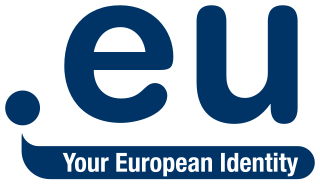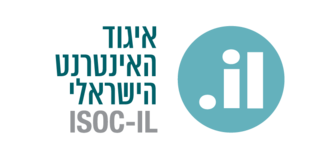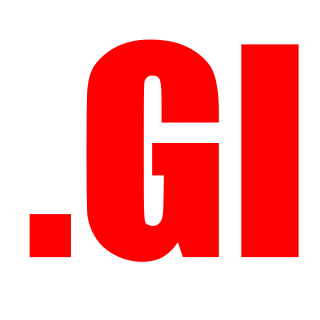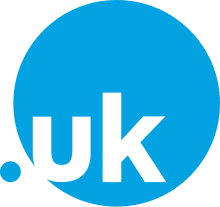
In the Internet, a domain name is a string that identifies a realm of administrative autonomy, authority or control. Domain names are often used to identify services provided through the Internet, such as websites, email services and more. Domain names are used in various networking contexts and for application-specific naming and addressing purposes. In general, a domain name identifies a network domain or an Internet Protocol (IP) resource, such as a personal computer used to access the Internet, or a server computer.
A domain name registry is a database of all domain names and the associated registrant information in the top level domains of the Domain Name System (DNS) of the Internet that enables third party entities to request administrative control of a domain name. Most registries operate on the top-level and second-level of the DNS.
Nominet UK is currently delegated by IANA to be the manager of the .uk domain name. Nominet directly manages registrations directly under .uk, and some of the second level domains .co.uk, .org.uk, .sch.uk, .me.uk, .net.uk, .ltd.uk and .plc.uk.

.eu is the country code top-level domain (ccTLD) for the European Union (EU). Launched on 7 December 2005, the domain is available for any person, company or organization based in the European Union. This was extended to the European Economic Area in 2014, after the regulation was incorporated into the EEA Agreement, and hence is also available for any person, company or organization based in Iceland, Liechtenstein and Norway. The TLD is administered by EURid, a consortium originally consisting of the national ccTLD registry operators of Belgium, Sweden, and Italy, joined later by the national registry operator of the Czech Republic. Trademark owners were able to submit registrations through a sunrise period, in an effort to prevent cybersquatting. Full registration started on 7 April 2006.

.us is the Internet country code top-level domain (ccTLD) for the United States. It was established in early 1985. Registrants of .us domains must be U.S. citizens, residents, or organizations – or foreign entities with a presence in the United States or any territory of the United States. Most registrants in the U.S. have registered for .com, .net, .org and other gTLDs, instead of .us, which has primarily been used by state and local governments, even though private entities may also register .us domains. The domain is managed by Registry Services, LLC, a domain name registry, on behalf of the United States Department of Commerce.

.ae is the country code top-level domain (ccTLD) in the Domain Name System of the Internet for the United Arab Emirates. It is administered by .aeDA which is part of the Telecommunications and Digital Government Regulatory Authority of UAE (TDRA).

.af is the Internet country code top-level domain (ccTLD) for Afghanistan. It is administered by AFGNIC, a service of the UNDP. As of 26 August 2020, .af was used by 5960 domains.

.il is the Internet country code top-level domain (ccTLD) of Israel, administered by the Israel Internet Association and managed by NIC - ISRAEL, which hosts the DNS root server and manages the Israeli Internet Exchange, that supports IPv4 and IPv6.
The Canadian Internet Registration Authority is the organization that manages the .ca country code top-level domain (ccTLD) for Canada. Its offices are located at 979 Bank Street in Ottawa, Ontario, Canada. CIRA sets the policies and agendas that support Canada's internet community and Canada's involvement in international internet governance. It is a member-driven organization with membership open to all that hold a .ca domain. As of March 2023, there were more than 3.3 million active .ca domains.
.zm is the Internet country code top-level domain (ccTLD) for Zambia. Registrants of .zm domains must "have a presence in Zambia".

.vg is the Internet country code top-level domain (ccTLD) for the British Virgin Islands. Because it allows registration at the second level, and does not require the registrant to be associated with the British Virgin Islands, it has also been used by piracy related websites such as The Pirate Bay, and video gaming related blogs and websites.

.vi is the Internet country code top-level domain (ccTLD) for the U.S. Virgin Islands.

.uy is the Internet country code top-level domain (ccTLD) for Uruguay. Domain names can be registered at second-level or at third-level. As of 11 June 2012, second level .uy registrations are possible.

.gi is the country code top-level domain (ccTLD) for Gibraltar, a British Overseas Territory. It was created on 5 December 1995.

.gr is the country code top-level domain (ccTLD) for Greece. Registrations are processed via accredited registrars and domain names in Greek characters may also be registered.

.so is the internet country code top-level domain (ccTLD) for Somalia. After a long absence, the .so domain was officially relaunched on November 1, 2010, by .SO Registry, which is regulated by the nation's Ministry of Posts and Telecommunications. It was launched through various accredited registrars around the world.

.ly is the Internet country code top-level domain (ccTLD) for Libya.

.ma is the Internet country code top-level domain (ccTLD) for Morocco. A local registrar with a local Moroccan company as administrative contact is needed to register a .ma or .co.ma domain name. Further restrictions are imposed on the registering of other second-level domains.

.na is the Internet country code top-level domain (ccTLD) for Namibia corresponding to the two letter code from the ISO-3166 standard.
.ps is the Internet country code top-level domain ccTLD officially assigned to the State of Palestine. It is administered by the Palestinian National Internet Naming Authority.















